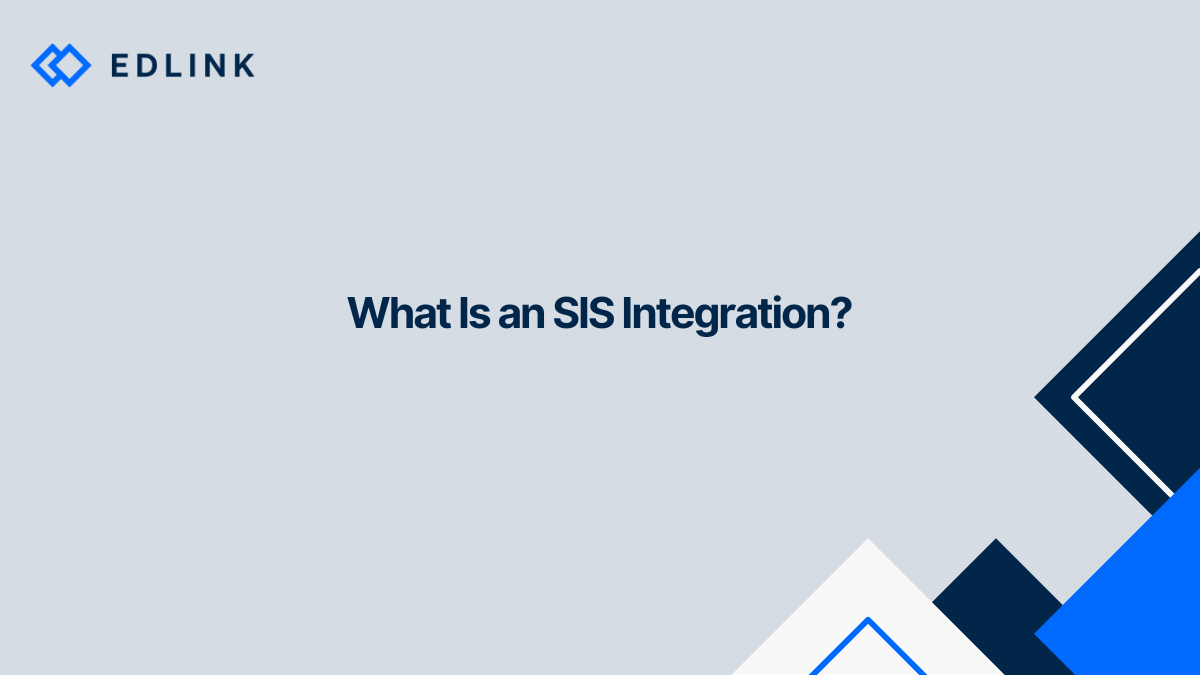Learning institutions (schools, universities, districts) use Student Information System (SIS) software to house, organize, and manage student records and business assets. These records can include data like PII (Personally Identifiable Information), academic progress, attendance, grades, and more. Sometimes SISs have features like:
- attendance tracking,
- grade reporting,
- student scheduling, and
- communication tools for teachers, students, and parents.
Overall, SISs simplify student record-keeping and state reporting for learning institutions.
SIS Integrations and Interoperability
Interoperability is the ability of software systems to share data between each other. In this context, interoperability refers to edtech products (elearning apps, tools, content, etc.) and their ability to connect with learning institution data systems (like an SIS). When interoperable, the two systems can:
- communicate with each other,
- exchange data, and
- eliminate tasks and human errors.
A learning institution might ask an edtech company, "how interoperable is X product?" Meaning can X product integrate with Z system. Advanced conversations around interoperability within edtech include discussing security and user experience.
Interoperability allows educators to have a more complete view of a learning journey. This perspective then supports better-tailored instruction to meet individual needs. The goal of interoperability with SISs is to use data to deliver a more effective, personalized, and seamless learning experience.
Are there any SIS integration Benefits for Edtech Companies?
When edtech companies integrate their product to an SIS it enables them to perform new functions like:
- provisioning accounts automatically and ahead of the school year (known as “rostering”)
- automatically share learning outcomes to a learning institution’s gradebook
- retrieve attendance data for analysis
- … and more!
Given the number of applications that learning institutions use these days, learning institutions need edtech products that are (1) interoperable and (2) seamlessly share data. Being able to do these two things makes an edtech product more marketable and “sticky” (read: hard to let go of). This means happier customers and higher renewal rates.
How Do SIS Integrations Work?
Edtech developers can build SIS integrations through a few methods, such as:
- using an education standard, like OneRoster,
- building a custom integration to the SIS’s API, or
- connecting to an aggregator like Edlink
Each method has SIS integration challenges and limits on the data it can exchange. For example, before a product can integrate with an SIS's API, the product needs the SIS's API key. This credential opens the "pathways/connections" to be able to start making requests. Or before an edtech product begins an OAuth launch from an SIS instance, a token must be shared securely with the edtech product. This token comes from the learning institution and is tied to its specific SIS instance. Either way, an edtech company building an integration themselves has to think of the required relationships and secure transfers of relationships like these. Regardless, each method expands access to student information that wasn’t there before.
This new access to student PII introduces a new consideration – security. Processing PII securely to limit the risk of it being illegally accessed or shared is of the utmost importance. Leaking student PII (through a phishing attack or a bad actor) could be a company-ending event in the edtech space. Plus, the more PII you have, the more risk you encounter. Ingesting as little PII as possible can significantly reduce an edtech company’s security vulnerability risk.
TL;DR
A Student Information System (SIS) is software for learning institutions to organize and manage student records. Integrating with an SIS is a step for edtech products to achieve interoperability. This integration lets edtech offer advanced functionality like:
- automatic rostering or
- automatically passing grades back to the SIS, and more.
The ultimate goal of SIS integrations is to provide a more seamless and tailored learning experience. However, building an SIS integration can present challenges. Edtech developers must also consider potential risks associated with accessing student PII.
Learn More about Integrations
If you’re interested to learn more about Integrations here’re other articles we’ve written:
- Building or Buying Your LMS Integrations
- The Benefits of Integrating Your App with an LMS
- 2022's State of the LMS Market
- 6 Reasons To Give Schools Multiple Options for SSO
Want to Learn More about Edlink?
If you're looking for a partner who can help guide you through developing LMS integrations (like these), then let’s introduce ourselves. We’re Edlink!

